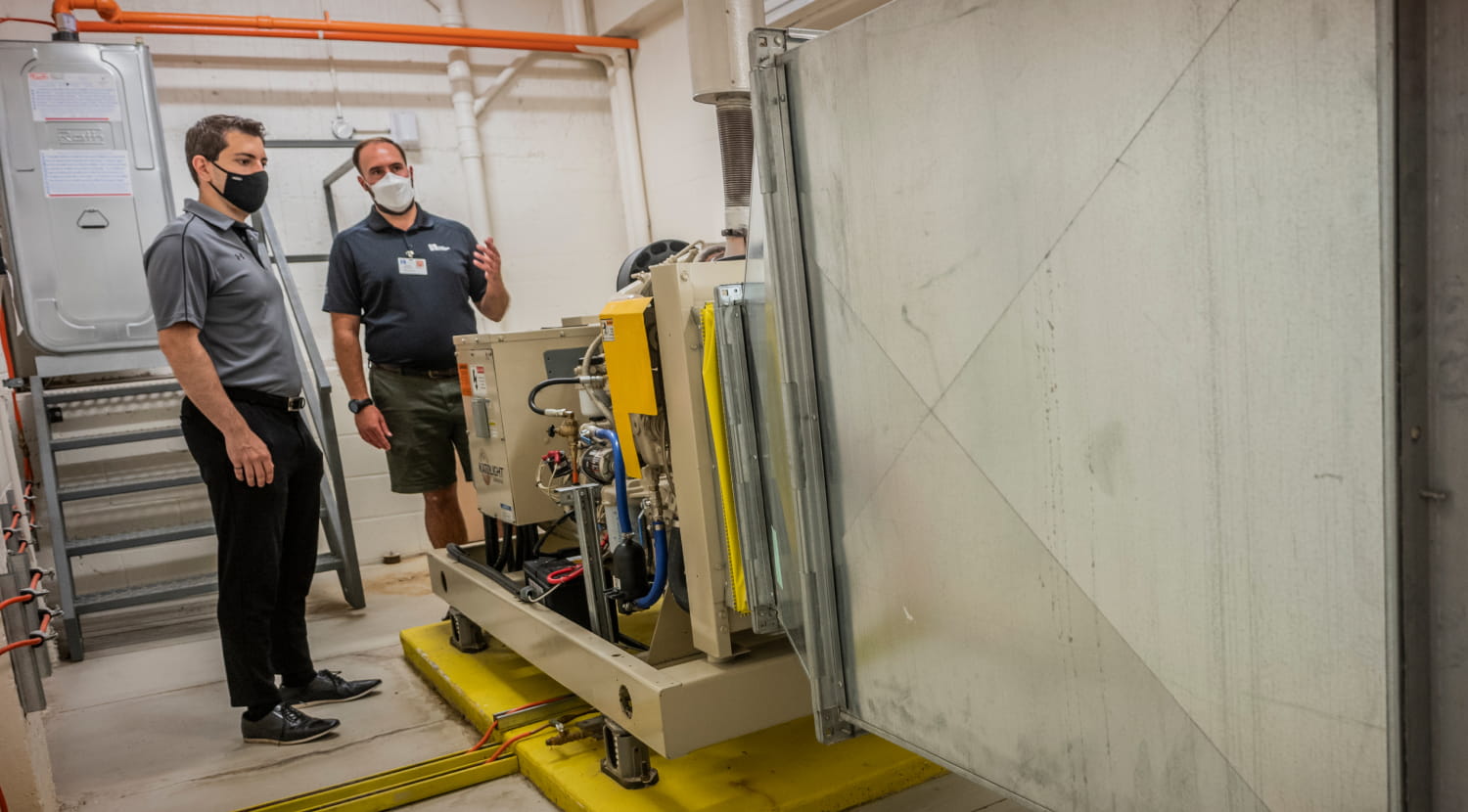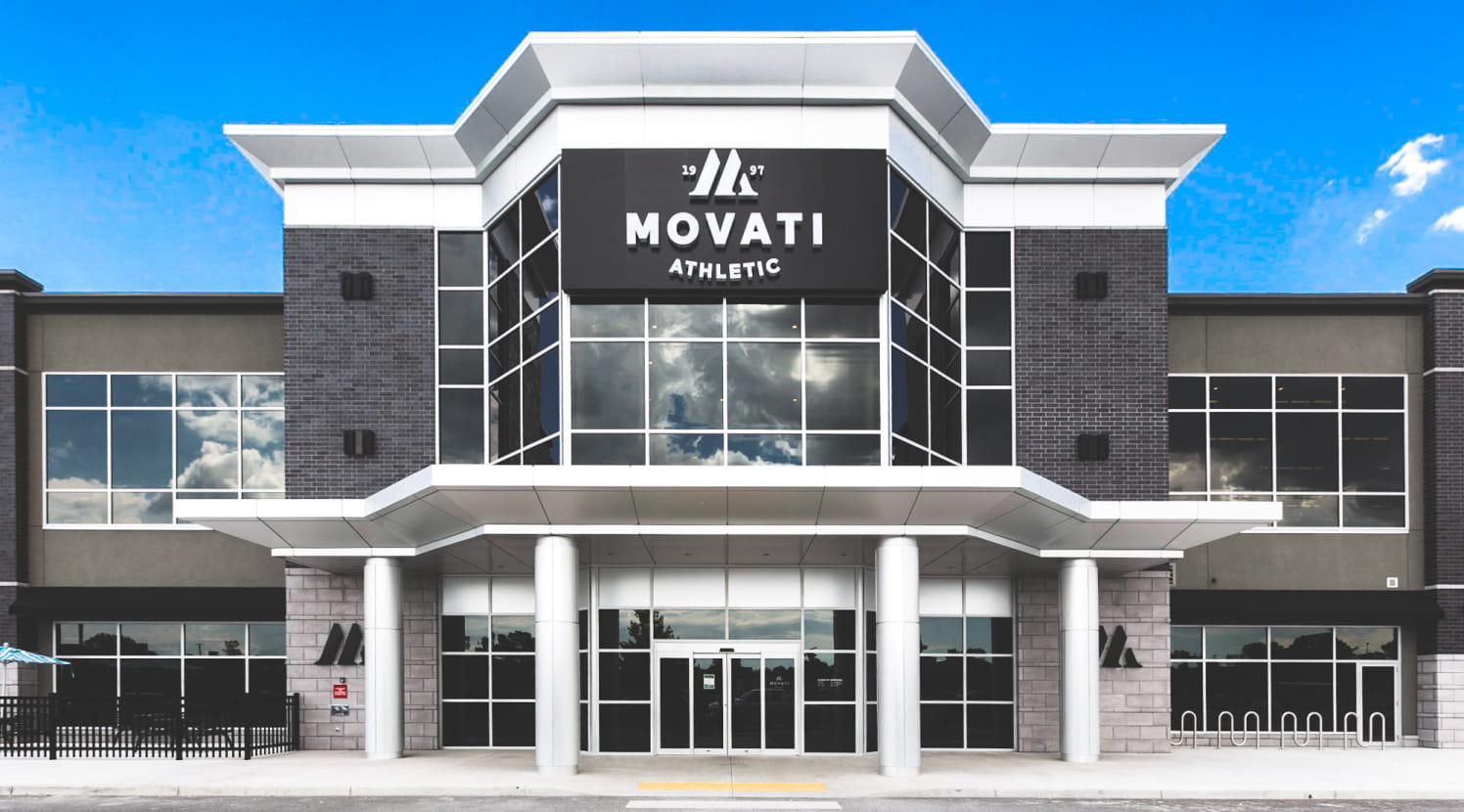November 2021
Energy Insider
Smart savings for business
Improving ventilation in schools
How to run a 1923 building like it was built today? That’s the assignment for Graeme McKenzie, Energy Coordinator at the District School Board of Niagara. Here, Graeme shares his experience working with Enbridge Gas Energy Solutions Advisor Julian Kazan on a recent Building Automation System (BAS) upgrade at St. Catharines Collegiate that reduced natural gas costs, improved ventilation and made spaces safer for students and staff. Here’s what Graeme had to say about the project.

How important is energy efficiency to your school board?
Very important. We’re a public sector organization, which means we have a mandate to reduce energy use. In my role, I oversee 100 buildings, and part of my job involves comparing the energy use of our original buildings to our newer, high-performance buildings. I try to figure out what multi-year, multi-stage retrofit programs can help us squeeze the older systems to operate in the most efficient way possible.
Why did you decide to upgrade your Building Automation System?
As part of our commitment to reducing energy use, many of our schools have participated in Enbridge Gas’ energy conservation programs over the years, with a focus on operational improvements and identifying low- and no-cost ways to improve energy efficiency. Through our participation, we discovered we could improve control of key systems by upgrading our BAS hardware, making programming changes and doing functional testing of end-use equipment.
Additionally, we reviewed all our ventilation systems as part of our response to COVID-19, which revealed more potential improvements for energy efficiency. At that point, it became clear we could kill two birds with one stone by upgrading our BAS.
What’s a BAS, anyway?
A Building Automation System is a centralized control system or computerized hub where a building’s critical systems—such as HVAC, mechanical and lighting—are scheduled, adjusted and monitored automatically.
What is the commercial custom retrofit program?
This was our first time participating in the commercial custom retrofit program with Enbridge Gas, which was a little nerve-wracking! Compared to the Fixed Incentive program, which provides financial incentives for equipment on a per-unit basis, the custom program incentivizes eligible projects based on estimated natural gas savings achieved. This was a large-scale project and came with higher costs, but there were also significant incentives from Enbridge Gas on the table and deeper energy savings. Working with Julian Kazan, our Energy Solutions Advisor, made the project more manageable: he ran the numbers, secured a $22,120 incentive and helped us realize annual natural gas savings of $13,260.
What savings are you seeing as a result of the BAS upgrade?
By improving our BAS scheduling, we’re no longer over-supplying fresh air when it’s not needed, having units run over the weekend or experiencing issues with changeover temperatures. The BAS upgrade also enabled us to lower boiler costs by 50 percent—all without having to change the boiler or other mechanical systems. We simply changed the logic and strategies behind how our systems operate and that gave us a great result.
I’d recommend engaging an Energy Solutions Advisor as soon as possible to get free expert help to support your project. It really helps to work with your local utility company—they have mandates to reduce energy use and find efficiencies too. In order to reach our climate change goals, we all have to work as a team. Enbridge Gas is one of our partners on that journey.
Already have a BAS?
For a limited time, upgrade your existing BAS to an Advanced BAS and receive an enhanced incentive of $0.30/m3 of natural gas saved annually—50 percent higher than our standard incentive. Contact an Energy Solutions Advisor to see if your building qualifies.
Learn more about commercial custom retrofit projects
See all incentivesHow MOVATI took energy efficiency to the next level
MOVATI Athletic is one of Canada’s fastest growing fitness clubs, known for delivering an upscale fitness experience with luxury amenities. When building a new premier fitness club in Windsor, Ontario, MOVATI took advantage of fixed incentives and expert help from Enbridge Gas to reduce energy costs long term.

Project highlights
-
$25,612 Enbridge Gas incentive
-
61,191 m3 natural gas saved annually
-
$18,357 annual savings
“We chose to install high-efficiency equipment because the long-term energy savings outweigh the higher cost of equipment.”
Bringing state-of-the-art facilities to the next level
MOVATI’s newest 70,000-square-foot fitness club features three levels, six fitness studios for classes, two swimming pools, a dedicated women’s only fitness area, steam rooms, infra-red saunas, cafe, lounges and other amenities. The investment is substantial—nearly $20 million in development and construction.
MOVATI is known for building features that create a safe and comfortable experience for members and use less energy. “We’re known for maintaining a high standard,” said MOVATI’s representative. “Energy efficiency is no exception.”
MOVATI offset upfront costs with incentives
MOVATI approached an Enbridge Gas Energy Solutions Advisor to determine which equipment might qualify for incentives. “We want to lower our carbon footprint if it makes sense for us financially,” said the representative. “In this case, what we would save on energy long term would more than outweigh the higher cost of energy-efficient equipment.”
The Energy Solutions Advisor worked closely with MOVATI to understand their goals of providing enhanced safety and comfort for guests. “Athletic facilities faced enormous challenges during the COVID-19 pandemic,” said the representative. “It was important that the eligible equipment was more reliable, more efficient and would generate ongoing savings.”
The following equipment qualified under the Enbridge Gas Fixed Incentive program.
-
Air curtains
At the club’s entrance, air curtains keep heat in the vestibule, which saves energy and eliminates draughts. This downward stream of heated air keeps guests comfortable as they move through the doors before and after a workout.
-
Demand control ventilation with CO2 sensors
Added to rooftop units, demand control ventilation (DCV) uses CO2 sensors to monitor and control ventilation based on the club’s reduced occupancy. When it’s closed or winding down for the night, heating or cooling will be reduced or turned off automatically.
-
Energy and heat recovery ventilators (ERV/HRV)*
The facility’s ERVs and HRVs help reduce energy costs by providing fresh outdoor air while recovering the most energy possible from outgoing air. Near the swimming pools, HRVs also help reduce humidity in the air.
“Our Energy Solutions Advisor was very helpful in the process from start to finish. They answered any questions that we had and helped determine which equipment was eligible for incentives.”
Applying for incentives was quick and easy
As part of the Commercial Fixed Incentive program, all eligible equipment is vetted so savings can be assured. MOVATI appreciated the support in navigating the program and applying for the incentives.
Planning a project? Offset your costs with fixed incentives.
The Commercial Fixed Incentive program can help you save on the following equipment:
-
Air curtains
-
Condensing make-up air units
-
Dock door seals
-
Destratification fans
-
Heat and energy recovery ventilators
-
Demand control kitchen ventilation
-
Demand control ventilation
-
Ozone laundry
Contact an Energy Solutions Advisor to identify energy-efficient upgrades suited to your facility.
* A DCV with CO2 sensor is not eligible to be installed in the same space where an ERV/HRV is being installed or is already operational. In this particular example, these two technologies operate separately in two different spaces/areas of the building.
A steady supply of fresh air and savings
Every building needs a mechanical ventilation system to bring in fresh air, recover energy from outgoing air and control moisture. But is it possible to improve indoor air quality while reducing energy use? The answer is yes—here’s how.

What are heat recovery ventilators (HRVs) and energy recovery ventilators (ERVs)?
An HRV/ERV refers to heat-exchanger equipment designed to transfer heat and moisture between the building exhaust air and the outside supply. This technology is becoming more popular because buildings are more airtight now and need more mechanical ventilation.
What’s the difference between the two?
The difference is HRVs only transfer heat, while ERVs transfer heat and moisture.
How do HRVs/ERVs work?
HRVs keep heat in while moving stale air out using a heat-exchange core. The core transfers heat from the exhaust stream to the incoming stream to warm the incoming air and reduce heating costs. With ERVs, the incoming fresh air is tempered with an energy recovery core. Heat is then exchanged through the core, allowing for the transfer of humidity as well. ERVs are able to capture the energy savings of the heat exchange and recover the energy associated with humidity levels in the air.
What are the benefits of installing this technology?
The benefits include lower energy and operating costs, improved indoor air quality and better working conditions. HRVs and ERVs can also lower maintenance costs by reducing wear and tear on your HVAC system.
Enhancing indoor air quality has become more important during the COVID-19 pandemic. How can HRVs/ERVs help?
HRVs and ERVs help by improving indoor air quality: they provide a steady supply of fresh air and remove stale air.
How do I know which is right for my building?
Connect with an Enbridge Gas Energy Solutions Advisor for free expert help—they can guide your decision. It’s important to carefully consider the climate of your building and other factors that affect indoor humidity levels before upgrading. For example, in southern Ontario, ERVs are more common because the climate is more humid and moisture is more of an issue.
What’s the installation process like for this upgrade?
Installation is relatively simple, with minimal disruption and downtime. There are two application options: one is standalone HRVs/ERVs, which work with your existing duct system. The second option is integrating them within your existing rooftop unit(s).
What are the incentives?
Financial incentives are available through our Fixed Incentive program. The incentive rate is based on a few factors, including whether you’re retrofitting or installing new, and the size and efficiency of your new system. Here’s a sample calculation:
No existing ERV + installing a new ERV with a ≥ 85 percent sensible heat recovery effectiveness = incentive of $1.75/CFM
“CFM” refers to “cubic feet per minute,” which is the speed that the fan in the HRV/ERV runs. An indoor swimming pool may need a fan with a capacity of 1,500 – 2,500 CFM. For a suite in a multi-unit residential building, a unit with 100 CFM may be sufficient.
“Sensible heat recovery percent effectiveness” is a measure of efficiency: a unit with 55 percent sensible heat recovery effectiveness takes 55 percent of the exhaust air through the air-to-air exchanger and transfers it to fresh air. Sensible heat recovery effectiveness can be up to 85 percent. The higher the efficiency, the higher the energy savings and incentive.
If your project is outside the scope of our fixed incentive program, our custom retrofit incentives may apply and you could earn up to 50 percent of your incremental project costs. Contact your Energy Solutions Advisor for details and to find out if your project qualifies.